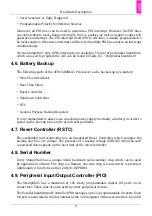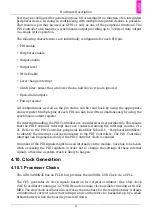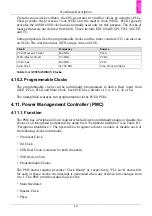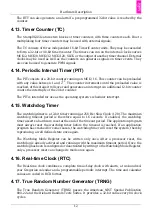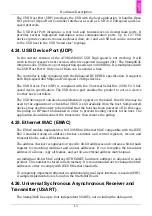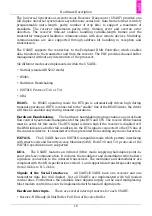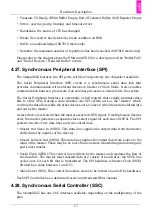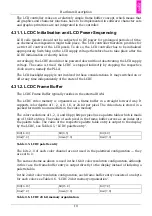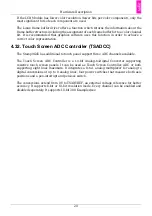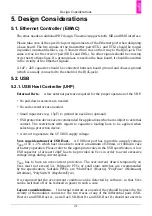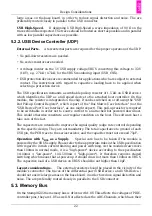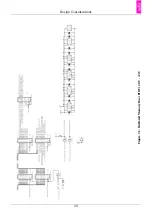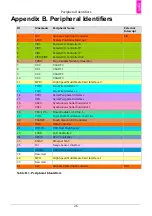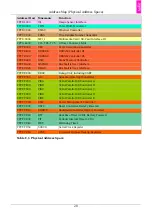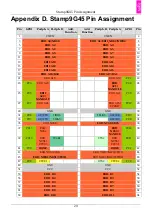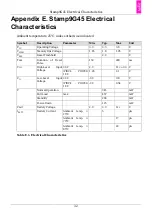
Hardware Description
17
• Transmit: TX Ready, (DMA) Buffer Empty, End of Transmit Buffer, Shift Register Empty
• Errors: overrun, parity, framing, and timeout errors
• Handshake: the status of CTS has changed
• Break: the receiver has detected a break condition on RXD
• NACK: non acknowledge (ISO7816 mode only)
• Iteration: the maximum number of repetitions has been reached (ISO7816 mode only)
Please refer to the chapter about the DMA unit (PDC) for a description of the "Buffer Full"
and "End of Receive / Transmit Buffer" events.
4.27. Synchronous Peripheral Interface (SPI)
The Stamp9G45 features two SPI ports, with four respectively one chipselect available.
The Serial Peripheral Interface (SPI) circuit is a synchronous serial data link that
provides communication with external devices in Master or Slave Mode. It also enables
communication between processors if an external processor is connected to the system.
The Serial Peripheral Interface is essentially a shift register that serially transmits data
bits to other SPIs. During a data transfer, one SPI system acts as the "master" which
controls the data flow, while the other devices act as "slaves" which have data shifted into
and out by the master.
A slave device is selected when the master asserts its NSS signal. If multiple slave devices
exist, the master generates a separate slave select signal for each slave (NPCS). The SPI
system consists of two data lines and two control lines:
• Master Out Slave In (MOSI): This data line supplies the output data from the master
shifted into the input(s) of the slave(s).
• Master In Slave Out (MISO): This data line supplies the output data from a slave to the
input of the master. There may be no more than one slave transmitting data during any
particular transfer.
• Serial Clock (SPCK): This control line is driven by the master and regulates the flow of
the data bits. The master may transmit data at a variety of baud rates; the SPCK line
cycles once for each bit that is transmitted. The SPI baudrate is Master Clock (MCK)
divided by a value between 1 and 255
• Slave Select (NSS): This control line allows slaves to be turned on and off by hardware.
Each SPI Controller has a dedicated receive and transmit DMA channel.
4.28. Synchronous Serial Controller (SSC)
The Stamp9G45 has one SSC interface available, depending on the multiplexing of the
pins.






